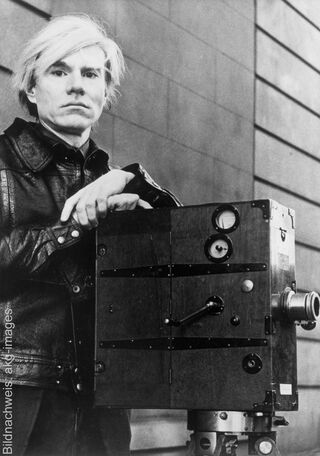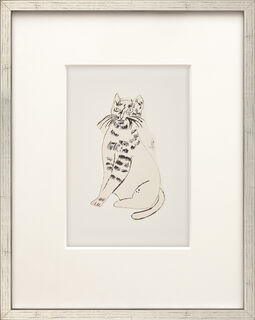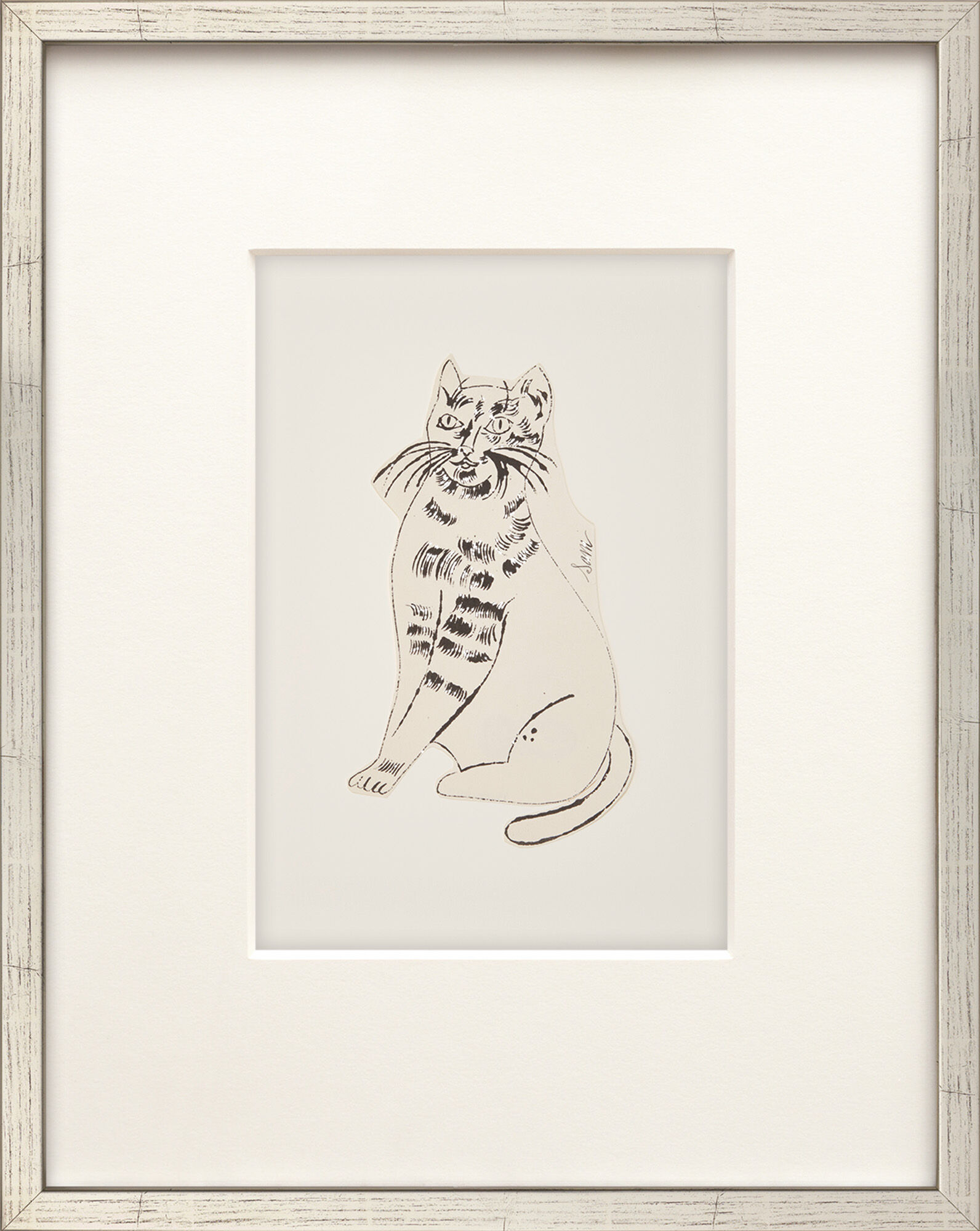Picture "Sam, from "25 Cats Name Sam and One Blue Pussy" F.S. IV. 55" (1954)


Picture "Sam, from "25 Cats Name Sam and One Blue Pussy" F.S. IV. 55" (1954)
Quick info
limited, unspecified edition | stamped | offset lithograph | framed | size 44 x 35 cm
Detailed description
Picture "Sam, from "25 Cats Name Sam and One Blue Pussy" F.S. IV. 55" (1954)
Andy Warhol's kitten "Sam" is part of a portfolio of hand watercolour offset prints that Warhol made in the 1950s: "25 Cats Name Sam and One Blue Pussy". The title is deceptive, as the portfolio contained only 17 illustrations and a title page.
The word "Sam" was written by his mother Julia Warhola, who inscribed the entire portfolio in calligraphy, next to the delicate cat depictions. Warhol's mother lived with him in a flat on Lexington Avenue in New York from 1952 to 1970. She was the one who encouraged him to pursue a career as an artist.
Julia Warhola owned 25 cats - and because she couldn't tell them apart, she named them all Sam. Warhol's early artistic work often consists of simple line drawings, which are also typical of his mother's style. The similarities can be seen most clearly in Warhol's artist's book "25 Cats Name Sam and One Blue Pussy".
Even when she made a mistake, Warhol appreciated maternal work. He used her handwriting for the title of "25 Cats Name Sam and One Blue Pussy", and when she forgot the "d" in "Named", he decided to leave it as she had written it.
Offset lithograph, 1954, made in parallel with Warhol's book "25 Cats Name Sam and One Blue Pussy". Indeterminate edition. Stamp of the Warhol Estate on the back. Motif size/sheet size 23 x 15 cm. Size in frame 44 x 35 cm as shown.

About Andy Warhol
1928-1987
Andy Warhol was America's most famous artist. He was considered a revolutionary, eccentric and inventor of Pop Art, all at once. Art critics praise him with titles that have never been bestowed on any artist before - not even Pablo Picasso or Salvador Dali. Alfred Nemeczek comments: "They (the praises) ranged from "pop star" to "pop artist", elevated the "pop genius" to "pop prince" to "prince of pop" and further up to "pop king", "pop tsar" and "grand mogul". But the "Picasso of Pop-art" has also been baptised as "High Priest" and "Pope of Pop"." (Artists - Critical Encyclopedia of Contemporary Art)
Warhol was born in Pittsburgh in 1928 and died in New York in 1987. After high school, the son of Czech immigrants went to the Carnegie Institute of Technology in Pittsburgh as a working student. In 1949, he settled in New York and three years later he made his debut with his work at the Hugo Gallery. Until that time, he was working as a commercial artist for fashion magazines, designing Christmas cards, LP covers and weather maps for television. Shortly afterwards, however, the artist had the idea of placing everyday objects at the centre of his pictorial motifs. Using the medium of graphic art, he created coveted cult objects.
Some of his best-known works include the silkscreen paintings of the red and white Campbell soup cans and the two-dollar bill. With these works, Warhol radically broke with art tradition in the USA and England from the 1950s onwards and is considered one of the leading figures in the new art movement, called Pop Art.
Alongside Warhol, Roy Lichtenstein and Tom Wesselman are American representatives who looked for their pictorial themes in the world of advertising, comics and Hollywood superstars. Elvis Presley, Jackie Kennedy and Marilyn Monroe became icons in Warhol's pictorial repertoire.
Transforming everyday objects into works of art allows them to receive a certain level of attention that they never receive as things that are used over and over again. Warhol's way of photographically reproducing the object demanded that the object itself and nothing else must achieve an effect. The works in which he implemented repetitions of the same motif also require this, but they have an additional effect through the colourful rearrangements.
The artist sees the world as it is and represents it: "I am extraordinarily passive. I take things as they are. I just watch, I observe the world."
The field of graphic arts, that includes artistic representations, which are reproduced by various printing techniques.
Printmaking techniques include woodcuts, copperplate engraving, etching, lithography, serigraphy.


